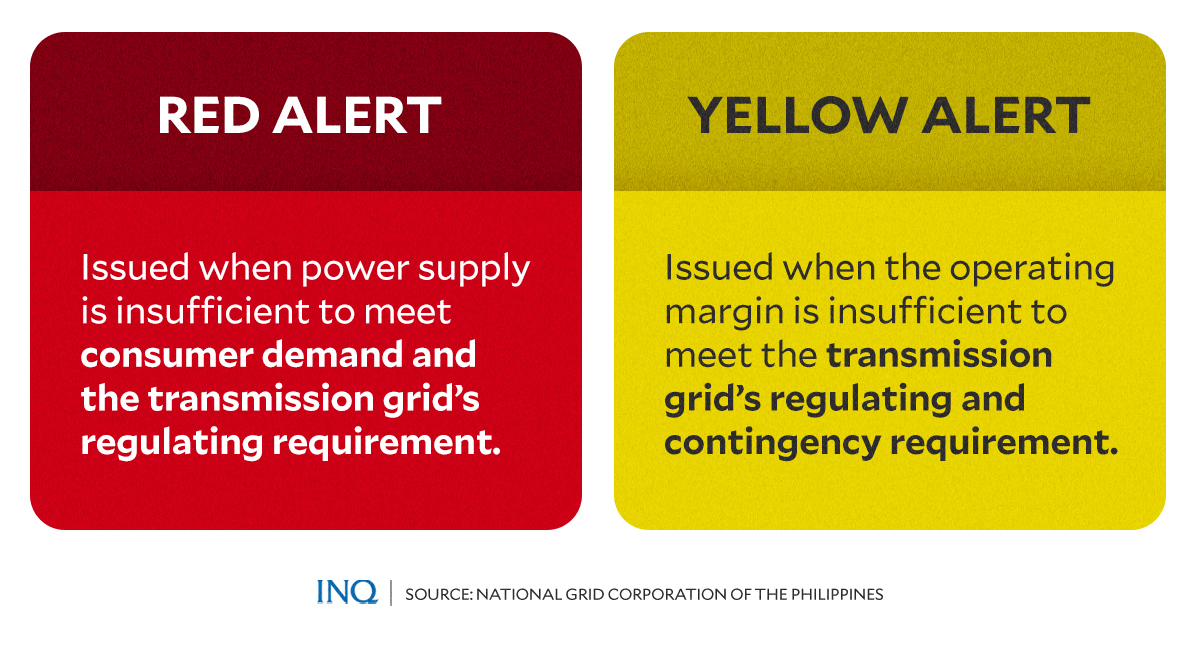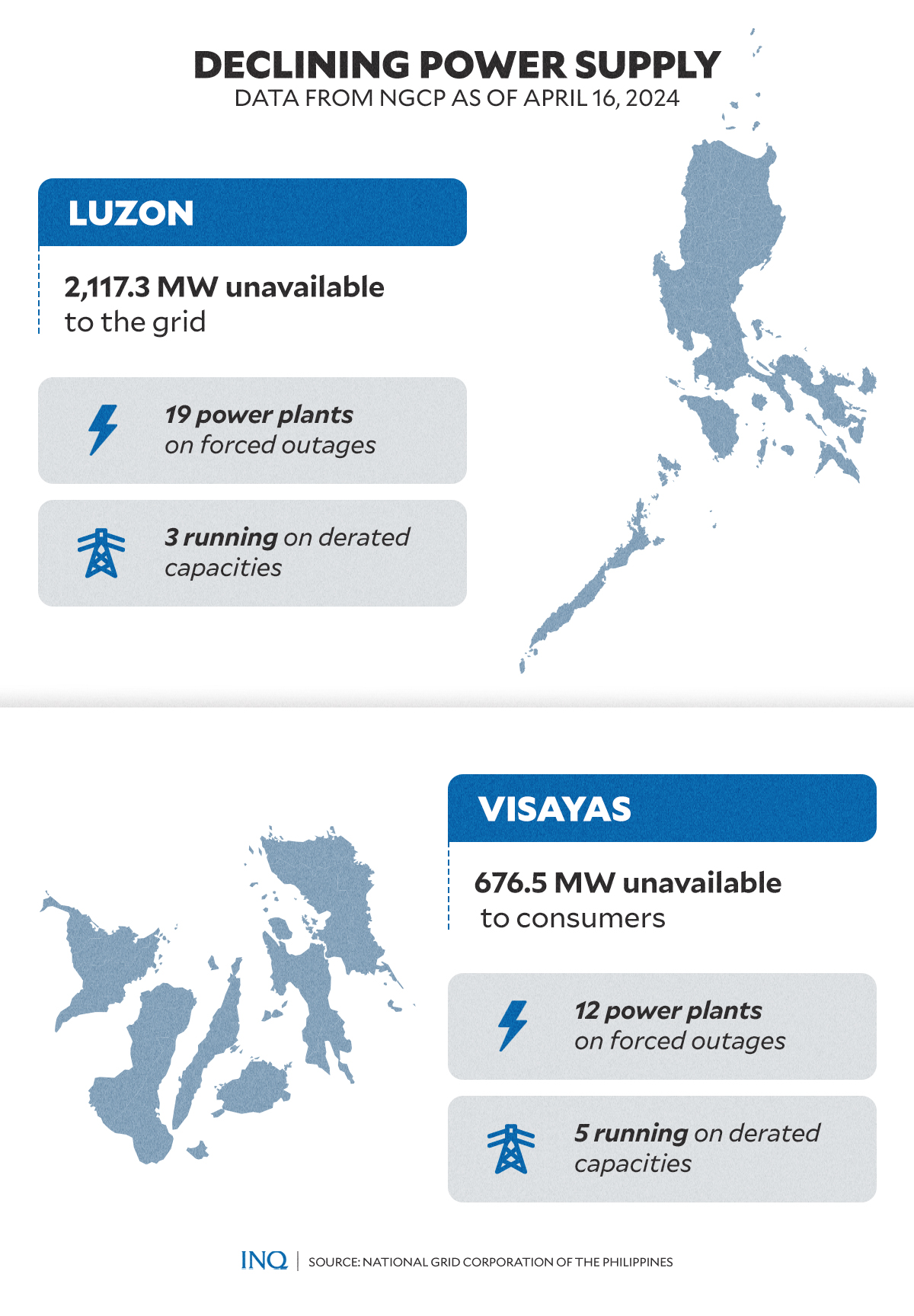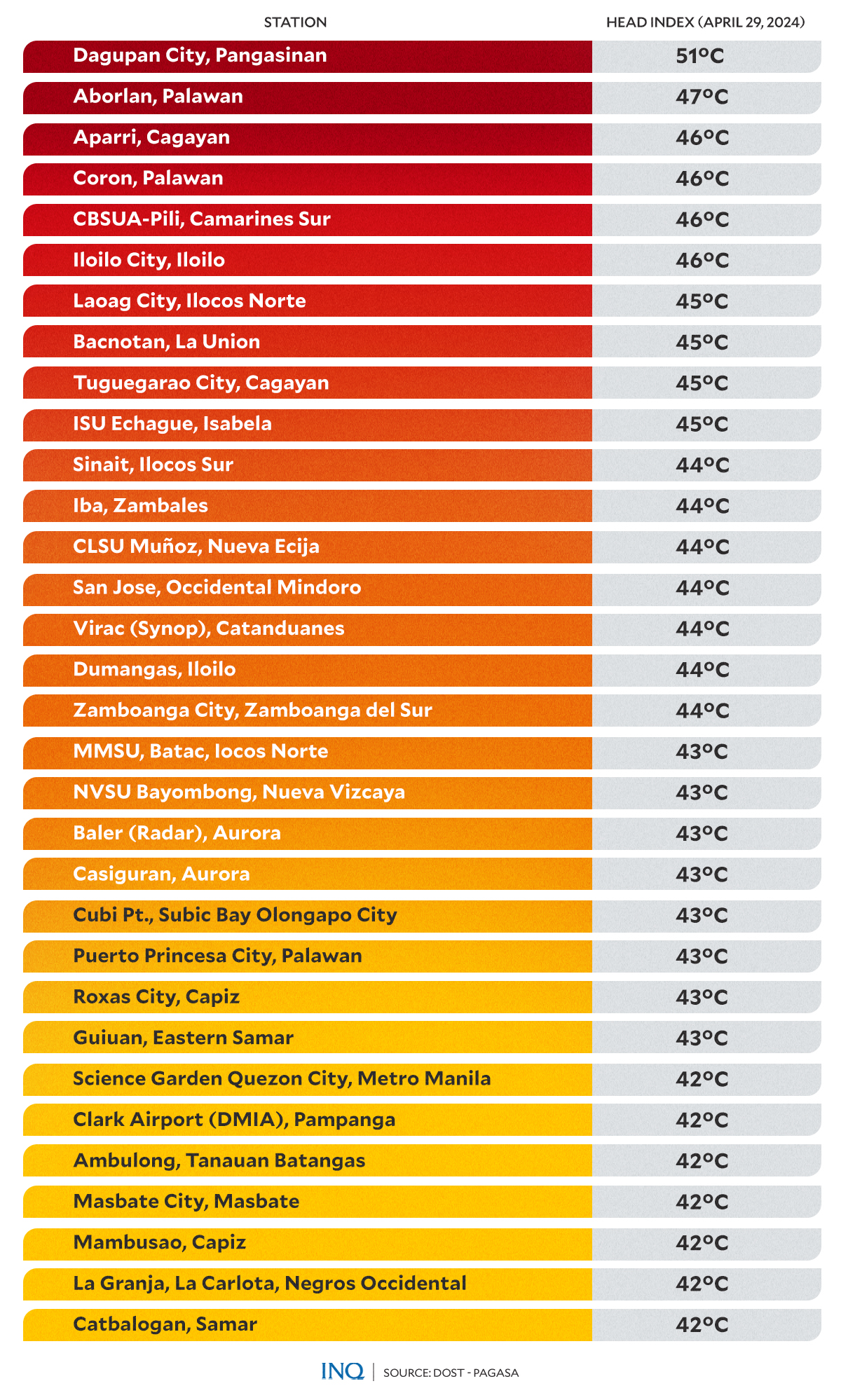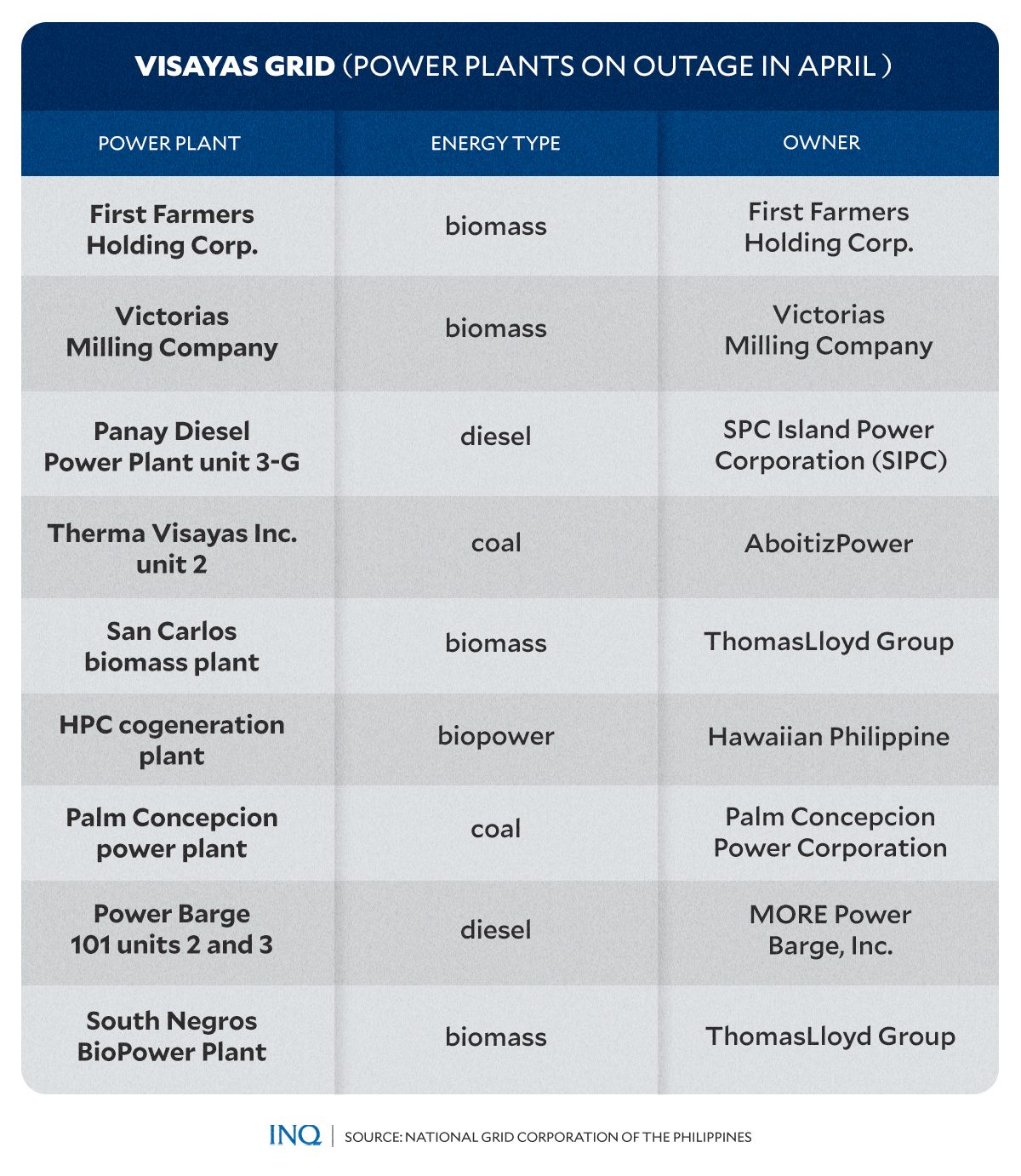Record PH heat drives power supply alerts, bares grid weaknesses
MANILA, Philippines—April 2024 has emerged as a critical month for the Philippines, marked by an unprecedented heatwave coupled with a deteriorating power supply.
This combination has led to power outages across various regions, leaving areas without electricity for several hours or even days.
As temperatures reach record highs, the surge in electricity demand — especially for cooling — places immense pressure on the already strained power grid.
The situation is further aggravated by frequent power outages and grid instability, which cause severe discomfort and pose serious health risks, particularly for the elderly and those with pre-existing health conditions.
READ: EXPLAINER: Prevent heat exhaustion, heat stroke, other related illness
Article continues after this advertisementThese challenges have not only put the national energy infrastructure under intense scrutiny but also highlighted the crucial interconnection between climatic extremes, energy demand, and infrastructure resilience.
Article continues after this advertisementDangerously thinning power supply
The National Grid Corporation of the Philippines (NGCP) employs a color-coded alert system to signal grid health: Red alert for severe power deficits that may cause brownouts, and yellow alert for low reserves that risk power disruptions if conditions deteriorate.
This alert system serves as guide to grid health and informs the public and stakeholders of the current energy status.
In April 2024, frequent yellow alerts were issued across Luzon and Visayas grids, highlighting the system’s vulnerability during this period of strained energy resources.
READ: Nationwide red, yellow alerts raised as power supply further thins
The Luzon grid, for example, came perilously close to brownout conditions multiple times.
On April 25, Luzon’s power availability was recorded at 14,568 MW, nearly overtaken by a peak demand of 13,941 MW, illustrating the thin margins between supply and demand and underscoring the urgent need for enhanced grid management and robust contingency planning.
This energy crisis was exacerbated by outages and reduced capacities at several power plants.
Specifically, as of April 18, 2024, 31 power plants across Luzon and Visayas were either shut down or operating at decreased capacity, with 18 in Luzon on forced outage and three running on lower capacities, while 13 in Visayas were on forced outage, and five others were operating below their usual capacities.
The massive reduction in power supply contributed significantly to the grid’s instability, sparking a call for immediate and future-focused investments in energy infrastructure upgrades and maintenance.
The Department of Energy (DOE) has issued a directive to all power plant operators, urging adherence to the Grid Operating and Maintenance Program (GOMP).
The program mandates that no baseload power plants should experience any outages, whether scheduled or unscheduled, during the critical months of April to June this year.
“The plant operators must always be prepared,” said Energy Undersecretary Mario Marasigan.
“We have rules and regulations on plant maintenance schedule,” he said.
Marasigan added that if power plants would not heed the rules, the Energy Regulatory Commission (ERC) “can come in and penalize them.”
Key power plants, like the Pagbilao power facility, experienced emergency shutdowns that contributed to the crisis. The DOE pointed out that while some plants were on extended maintenance, the emergency shutdowns played a critical role in the power shortage.
Efforts to bring some plants back online were underway, with expectations set for the end of the month. For instance, plants like Sta. Rita and Southwest Luzon Power Generation Corp. (SLGPC) had already resumed operations as of April 24, 2024.
This situation has led to a heightened push from entities, like the Philippine Independent Power Producers Association (PIPPA) and Manila Electric Company (Meralco), for policies that support the addition of new capacities and fair, conducive investment conditions to bolster the country’s power generation capacity.
Scorching heat felt in PH
Aside from power plant shutdowns and a dangerously thinning power supply, April this year was also marked by extreme temperatures, leaving people sweltering in the heat amid power outages.
According to the Philippine Atmospheric, Geophysical and Astronomical Services Administration (PAGASA), the scorching heat reached alarming levels on April 29, with Metro Manila’s NAIA Pasay City recording 41°C, and Sangley Point, Cavite, soaring to a blistering 47°C.
Dagupan City in Pangasinan experienced a deadly heat index of 51°C on the same day, marking the highest heat index recorded that day and highlighting the severe heat conditions many regions faced.
PAGASA explained that heat index temperatures ranging from 33 to 41 degrees Celsius are classified as “extreme caution,” while 42 to 51 degrees Celsius are labeled as “danger” level.
As of April 29, the heat index bulletin of the state weather bureau showed that 33 areas in the country were under the “dangerous” heat index classification.
On April 28, the heat index in Iba, Zambales, reached 53°C under the “extreme danger” classification, marking the first time this classification was recorded this year.
READ: After sizzling at 53°C, dangerous heat index to continue in Zambales
These high heat index values, combined with power supply issues, have heightened health risks for communities across the country.
Without reliable electricity, many are unable to cool their homes, especially in areas where the temperature soared to dangerous levels.
The Department of Health (DOH) has issued warnings about the dire consequences of extreme temperatures, particularly when compounded by power outages.
“Such temperatures can lead to heat cramps and heat exhaustion, characterized by symptoms such as fatigue, dizziness, headache, vomiting, and light-headedness,” the health department said in a statement.
“Prolonged heat exposure increases the probability of heat stroke, a serious condition characterized by loss of consciousness, confusion, or seizures, which can be deadly if left untreated,” it added.
READ: DOH gives first-aid steps to prevent heat-related ailments
The lack of cooling systems during brownouts poses severe health risks, particularly for the elderly and those with pre-existing health conditions, increasing the likelihood of heat-related illnesses, including heat strokes.
A study published by the American Chemical Society in 2023 estimated the possible health impacts of heat waves and blackouts happening at the same time in three big cities in the United States.
The study found that there was a significant surge in heat-related illnesses and deaths in each of the three cities when the power went out during heat wave conditions.
“We find the concurrence of a multi-day blackout event with heatwave conditions to more than double the estimated rate of heat-related mortality across all three cities, and to require medical attention for between 3% (Atlanta) and more than 50% (Phoenix) of the total urban population in present and future time periods,” the study stressed.
Demand surge amid extreme heat
The DOE on April 29 issued a warning about the possibility of brownouts due to the increasing power demand and power plant outages amidst the extreme heat brought by the El Niño phenomenon.
“How close are we to red alert, brownouts if there’s red alert? Well, there is a potential but as long as we have our contingency measures, we can avoid it,” Marasigan said.
“Normally, our peak demand is towards the last week or end of May or June. But for this year, not only did the highest peak demands happen on April 24, but this surpassed our projection by almost 100 megawatts,” he continued.
Earlier this month, the energy department noted that the issuance of yellow alerts, and possibly red alerts, will continue until next month as the heat index remains extremely high in most areas of the country, resulting in an increase in demand for electricity.
“We can only predict the demand increase based on the heat index. And you can see that there will be yellow alerts based on the heat index alone,” said Energy Undersecretary Rowena Guevara at a press briefing.
“If none of the power plants go offline unexpectedly, then we should be staying in the yellow alerts,” she said.
“But if some of them, especially the big power plants, go offline, then we will go into red alerts,” Guevara explained.
President Ferdinand “Bongbong” Marcos Jr. meanwhile sought to allay concerns about the Philippines facing an artificial power crisis following the reiteration of a yellow alert by the country’s sole grid operator in the Luzon and Visayas grids.
He attributed the situation to a surge in demand driven by the El Niño phenomenon.
READ: El Niño, La Niña together? What to know
Speaking to reporters in the southern province of Cotabato on Monday (April 29), Marcos emphasized that the power outage was not caused by an artificial crisis, but rather due to an overloaded power system.
Marcos explained, “Our consumption suddenly went up really… because it’s very hot.”
READ: Marcos on power infra: Others forgot about it, we’re catching up only now
As of April 25, a total of 103 cities and towns have been placed under a state of calamity due to El Niño, affecting approximately 2.1 million individuals, according to Task Force El Niño spokesman and Presidential Communications Assistant Secretary Joey Villarama.
Power companies explain
AboitizPower, which owns several power plants affected by shutdowns this month, earlier explained that their Therma Visayas Inc. (TVI) Unit 2 experienced a plant outage attributed to a boiler leak.
Other companies with affected power plants have yet to comment on the shutdowns.
Currently, the ERC is investigating six power generation companies that had their facilities shut down when the red and yellow alerts were issued. The ERC has not disclosed the company names until the preliminary investigation results are released.
“The ERC, in its efforts to investigate the red and yellow alerts in the Luzon and Visayas grid in April, has called on six generation companies to provide more information on the recent outages of their power plants,” the commission said.
READ: Explain outages, 6 power firms told
The agency stated that in the previous year, it levied approximately P60 million in fines against 14 generation firms for exceeding the permissible outage days.
The ERC observed that dwindling power reserves corresponded with escalated power expenses.
Citing data from the Wholesale Electricity Spot Market (WESM), the ERC noted that the average spot market price in Luzon soared by 47 percent in the week of April 15 to 21, compared to the average prices for the previous week of April 8 to 14.
When compared to previous years, current average prices were consistent with those recorded in 2023 but reflected a 13-percent increase compared to average prices for the same period in 2022.







